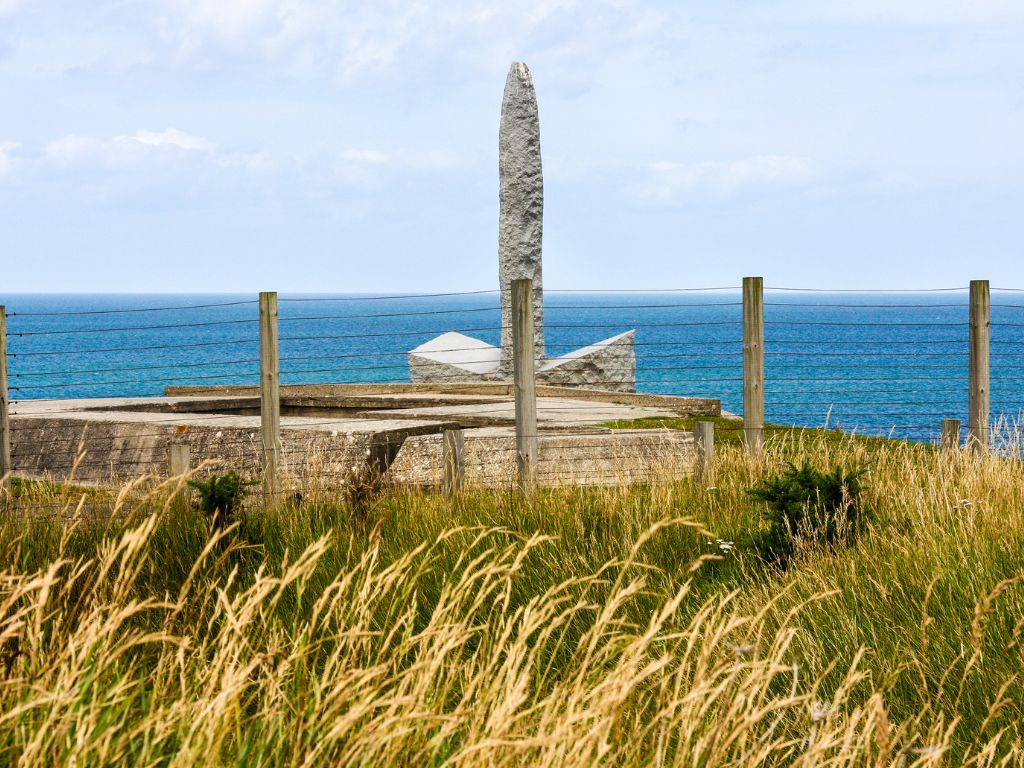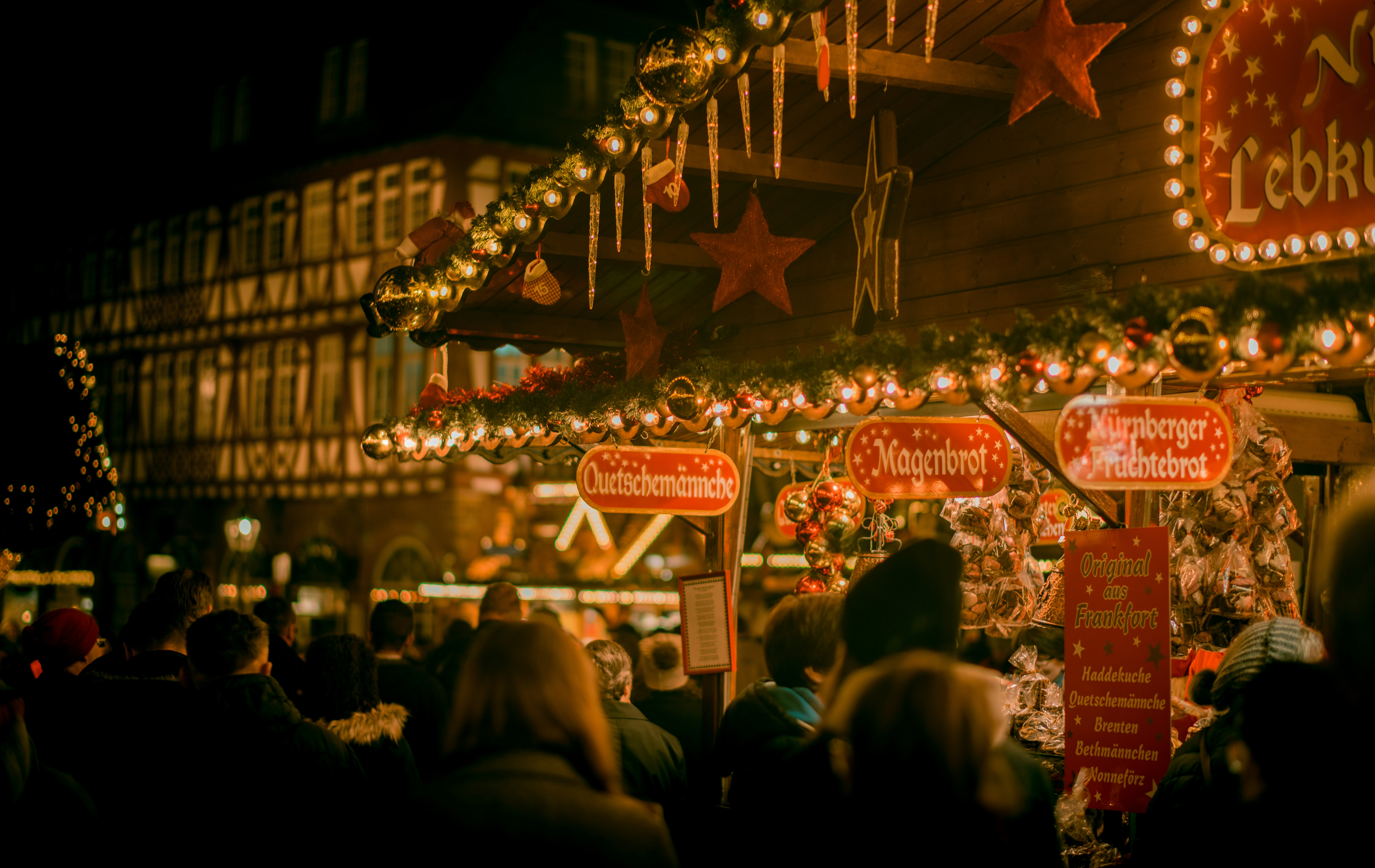Normandy is one of France’s most storied historic regions, characterized by stunning countryside views, medieval rivalries, and a rich tapestry of heritage. Though its roots date back hundreds of years, many travelers today visit the D-Day beaches to experience a more recent history. So whether you prefer to learn about Normandy’s dukedoms, taste the famous cheeses and beverages, or learn about World War II sites, Normandy offers a wealth of opportunities for history aficionados.
What is Normandy famous for?
Normandy is a cultural landmark in France, as its unique and beautiful landscapes inspired countless impressionist works of art. Monet and Renoir painted some of their most famous works of Normandy’s unmatched countryside and natural beauty.
While many people associate France with wine, French cider is the signature export of Normandy. The region is one of the world’s largest areas for apple production, and cider is the sought-after byproduct of Normandy’s expansive apple orchards.
Of course, it wouldn’t be France without cheese – and Normandy is no exception. Camembert and Pont-l'Évêque are some of Normandy’s most famous cheeses. There’s no better way to experience the region than by sampling its enviable cheeses and beverages while enjoying the picturesque rolling hills, lush valleys, and distinctive coastline.
Where to Visit in Normandy
Experience the rugged beauty of one of France’s most inspirational, emotional, and incredible locations. From verdant hills to sweeping coastlines, Normandy is a window into our past and a moving reminder of the possibilities of our future.

Mont-Saint-Michel
Mont-Saint-Michel is a tidal, rocky island off the coast of Normandy. A medieval abbey and village are perched atop its steep granite rock, an amazing monument to the skill of its 8th-century builders.
Over the centuries, Mont-Saint-Michel was expanded and fortified, cementing its place in history as a symbol of Norman power and influence across France. The village below the abbey was designed to house the workers and pilgrims who came to the island. It is a maze of narrow streets, stone houses, and souvenir shops, all clustered together on the steep slopes of the rock.
Mont-Saint-Michel is a UNESCO World Heritage site and one of France’s most popular tourist attractions. During low tide, visitors can access it via a causeway, or by shuttle bus during high tide. Enjoy panoramic views of the surrounding bay as you walk the same stone streets that visitors and residents walked centuries ago.
Learn more about Mont-Saint-Michel’s unique history with this Context lecture hosted by Alexander Wilson, local historian and Oxford Graduate.
Bayeux Tapestry
The Bayeux Tapestry is a looking glass into medieval history. The embroidered cloth vividly depicts the events leading up to the Norman Conquest of England in 1066, including the Battle of Hastings. The tapestry, made of linen cloth, is nearly 230 feet long, and it features stunning embroidery by the artisans of the time.
According to legend, it was created around the 1070s and commissioned by Bishop Odo, the half-brother of William the Conqueror. While much about its origins are unknown, it is thought to have been made in England and brought to Bayeux. It has been on display in the town since at least the 11th century. This relic from ancient times is one of the few surviving examples of medieval embroidery and is considered a masterpiece.
The Caen Memorial Museum
For visitors interested in deepening their war knowledge, visiting The Mémorial de Caen (or The Caen Memorial Museum) will be particularly educational and meaningful. The Mémorial de Caen is a museum and war memorial that opened in 1988.
The museum is dedicated to the history of the 20th century, with a specialized focus on the events leading up to and including World War II. It features exhibits on the rise of fascism and Nazism, the causes and consequences of the war, and the liberation of France.
The museum also has extensive exhibits on the Normandy landings, including original equipment, vehicles, and personal effects from soldiers. It also has an impressive collection of archival materials, including photographs, film footage, and documents.
In addition to its exhibits, the Caen Memorial Museum is also home to a research center, an educational center, and a conference center. It is a popular destination for visitors to Normandy interested in learning more about the history of World War II and the Normandy landings.
Fine Art Museum, Rouen
Art lovers will not want to skip The Musée des Beaux-Arts de Rouen, a fine art museum with an extensive collection of paintings, sculptures, and decorative arts dating from the Renaissance to the 20th century.
Housed in a former archbishop’s palace, take in the incredible collection of over 8,000 works of art. The museum’s collection includes works by Monet, Renoir, Delacroix, Caravaggio, and many lesser-known artists. Its collection of Impressionist paintings is unrivaled, and it also has a significant collection of art from the Renaissance period, including works by Titian, Veronese, and Rubens.
Joan of Arc History Museum
Immerse yourself in the history and myth of the heroine of French History with a trip to The Historial Jeanne d'Arc (Joan of Arc Museum), located in the Archbishop's palace in the heart of Rouen’s historic city center.
The historical building is where Joan of Arc was condemned to death in 1431. This unique experience blends the old world and the new with multimedia experiences against the backdrop of the evocative building. Visitors will leave with an enhanced understanding of Joan of Arc’s critical contributions to France’s politics, art, and history.
Le Havre
Take in the coastal air and experience a piece of history in Le Havre. It is located on the English Channel and is France's second largest port.
The city was heavily bombed during World War II and largely destroyed. After the war, it was rebuilt according to the plans of architect Auguste Perret, who designed a new city center with wide streets, modern buildings, and a uniform, concrete aesthetic. This modernist architecture is now recognized as a UNESCO World Heritage site.
Stroll through the vibrant city and marvel at its mix of modern and historic architecture as you enjoy its thriving arts and culture scene with museums, theaters, and galleries. The city also features attractions such as the St. Joseph Church, the Musée d'Art Moderne André Malraux, and the beach at Sainte-Adresse.
World War II Sites in Normandy

Visiting Normandy offers an important look into World War II. Context’s Full-Day D-Day and Normandy Beaches Tour allows you to dive deeper into local history with an expert and private car service.
Meeting in Bayeux, your tour’s route may take different directions according to the interests of the group; however, it typically starts with the American sector: Omaha Beach and the Pointe du Hoc. Your guide will introduce the background for the invasion before you see the steep cliffs and rugged terrain for yourself. You’ll hear the story of the intense two-day battle for the 2nd Ranger Battalion and discuss the strategy on both sides.
Your journey then continues to Omaha Beach, which today stands as the Normandy American Cemetery and Memorial. You’ll hear about the American forces' role in the invasion and spend some individual time at the beach and cemetery.
From there, you’ll leave the expansive beach behind and drive east to Arromanches. This artificial port is an important point of discussion because of its importance during Operation Overlord for supplies and reinforcements throughout the critical D-Day period. If time allows, you may also visit a German cemetery to contemplate the perspective of the German soldiers. At the end of the day, you’ll return to Bayeux with a deeper and more nuanced understanding of this somber period.
D-Day Beaches
Visiting the D-Day beaches in Normandy is a significant experience. There’s no way to fully comprehend the devastation and chaos the soldiers faced on the sand, but the beaches’ monuments and cemeteries offer an important opportunity for solemn reflection.
The D-Day landings, also known as Operation Overlord, were a critical turning point in the war. This involved the largest amphibious invasion in history and was led by American, British, and Canadian forces, who faced heavy resistance from German troops. From June 6th to August 30th, 1944, Germans and Allied forces waged battle along the cliffs and beaches across the Normandy coastline.

What are the 5 Normandy beaches?
The five D-Day beaches of Normandy were Utah, Omaha, Gold, Sword, and Juno. Each played a significant role in WWII. The Allied Forces faced unexpected challenges at every turn as troops from across the world united to defeat their common enemy.
Normandy American Cemetery
Established by the U.S. First Army on June 8, 1944, The Normandy American Cemetery and Memorial was the first American cemetery on European soil in World War II.
The cemetery spreads across 170 acres and contains 9,386 graves, most belonging to men who lost their lives in the D-Day landings and ensuing operations. The Walls of the Missing, a garden space at the memorial, includes 1,557 names.

7 Insider Tips and Tricks to plan your visit to Normandy
- Plan ahead: Research the historical sites you want to visit, their opening hours, and admission fees. This will help you create a realistic itinerary and avoid any unexpected seasonal closures.
- Hire a Context guide: Hiring a local tour guide can provide you with a deeper understanding of the history and culture of Normandy. They can also take you to lesser-known sites and help you avoid tourist traps.
- Rent a car: While it is possible to use public transportation to get around Normandy, a rental car will give you more flexibility and allow you to explore more remote areas.
- Visit during the off-season: If you want to avoid the crowds and enjoy a more relaxed experience, consider visiting Normandy in the shoulder season (April to June and September to October).
- Wear comfortable shoes: Many of the historical sites in Normandy involve walking on uneven terrain and through dramatic wind gusts, so wear comfortable shoes and dress appropriately for the weather.
- Try the local cuisine: Normandy is known for its delicious cuisine, including seafood, cheese, and cider. Take the time to try some local specialties and explore the region's culinary traditions.
- Respect the history: Remember that the historical sites in Normandy are sacred places that hold great meaning for many people. Be respectful of the memorials, museums, and monuments and follow any rules or guidelines for visitors.
Take a Tour of Normandy with Context Travel
Whether you want to experience the solemn significance of the D-Day beaches or visit a medieval monastery (or both), Context has expert-led tours to ensure you make the most of your time in Normandy.
Our Full-Day D-Day and Normandy Beaches Tour gives you a chance to learn World War II history from an expert in the setting where it all happened. You can also take a Full-Day Mont-Saint-Michel Tour to soak up the sites and stories of this awe-inspiring abbey.

You May Also Like:













